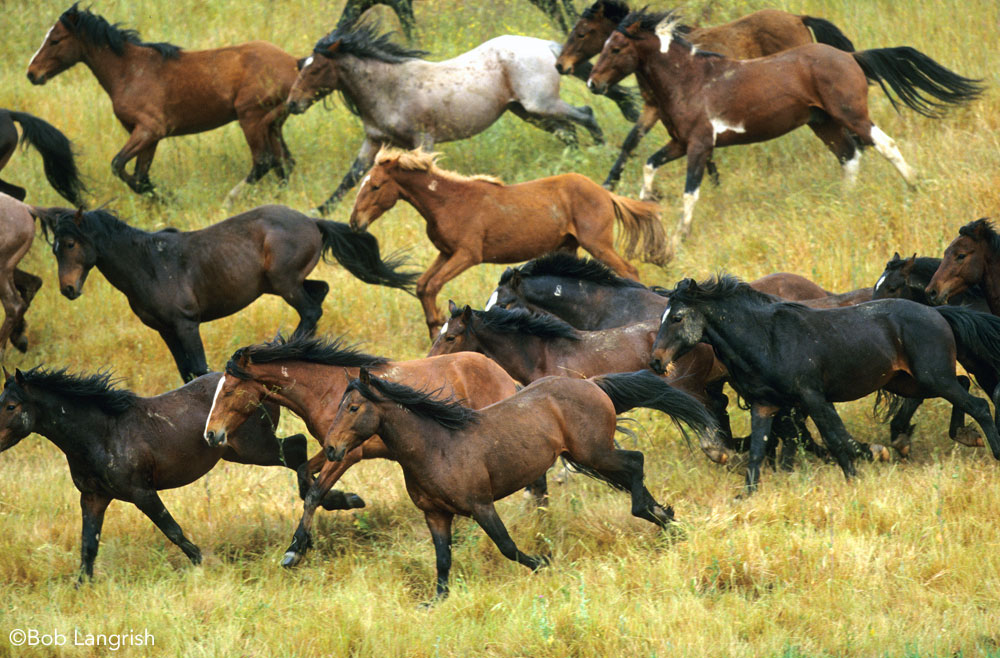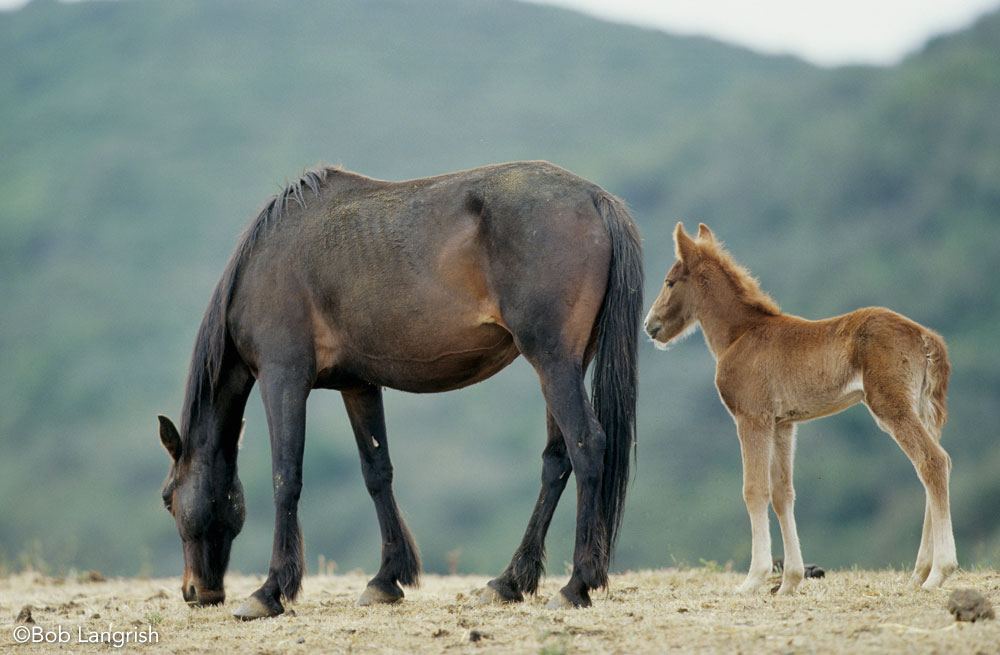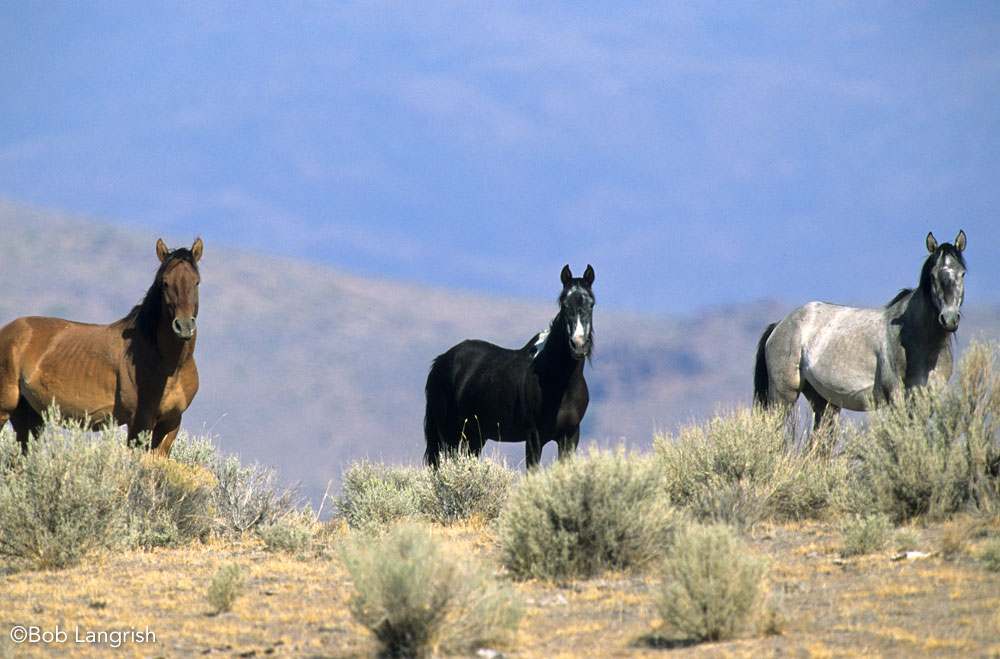A diverse coalition have come together to create a plan they believe can continue protecting America’s Mustangs for years to come.
- The Bureau of Land Management (BLM) was given jurisdiction over America’s wild horse and burro population since 1971.
- Mustangs are regularly removed from rangelands due to conflict between the increasing population of horses, ranchers who use the land to graze livestock, and environmental concerns about the horses’ impact on the ecosystem.
- A new plan created by animal welfare organizations, ranchers’ groups, and environmental organizations aims to balance the interests of all parties without resorting to slaughtering Mustangs.
- Opponents of the new plan question whether it will be effective, and whether it actually protects Mustangs.
Now, a diverse coalition of wild horse welfare advocates, ranching organizations, rangeland advocates and state governments have come together to create a plan they believe can promote the horses’ well-being for years to come. But not all wild horse advocates believe that the plan will benefit the animals in the long run.
The History of Mustang Management
The Roaming Wild Horse and Burro Act of 1971 protected wild horses and burros and placed them under the jurisdiction of the Bureau of Land Management (BLM). Today, more than 80,000 horses reside on Herd Management Areas (HMA) in 13 western states. Nearly 37,000 more roam 289,000 acres of grasslands in long-term pastures, and approximately 12,000 reside in short-term holding corrals.
With some herd sizes estimated to double every four years, some ranching and rangeland advocacy groups have argued that the growing sizes of on-the-range the Mustang herds compromise ranges by competing with domestic cattle, sheep and goats for resources on public grazing lands.

In response, the BLM and some welfare advocate organizations have investigated ways to control herd growth without allowing the BLM to sell gathered horses “without restriction”—that is, to buyers who would sell the animals for slaughter.
Population control measures have included the use of the contraceptive vaccine immunocontraceptive porcine zona pellucida (PZP). The BLM has also investigated surgical sterilization of mares.
Protecting The Mustangs: An Unlikely Alliance
In April, a diverse group that included the American Society for the Prevention of Cruelty to Animals (ASPCA), Return to Freedom wild horse sanctuary, the National Cattlemans Beef Association, Public Lands Council, the American Farm Bureau Federation, the Society for Range Management, and other diverse stakeholders announced their support for a “non-lethal” wild horse management plan to be proposed to the BLM.
The plan supports a “robust” fertility control program, including use of PZP to vaccinate 90 percent of wild mares; conducting “strategic gathers” that would target herds in highly populated HMAs in order to protect them from forage and water shortages; and relocating gathered horses and those residing in short-term holding facilities to long-term “humane pasture facilities.”

The plan also calls for increased adoptions to reduce the total cost of the BLM’s wild horse management program and redirecting funds to long-term strategies for the care and sustainability of horse and burro populations.
In the past, those who represent ranchers and range management groups were often at odds with wild horse advocates mainly because of the way the horses consumed rangeland resources.
That’s why support for the plan from those groups is significant, says Ryan Yates, Director of Congressional Relations for AFBF.
“Each of the stakeholders involved in this proposal had to set aside some long-held positions in order to reach this agreement,” Yates points out. “While it was difficult for us to cede some tools authorized by the Wild and Free-Roaming Horses and Burros Act including sale-without-restriction, we are hopeful that this good-faith effort will soon be rewarded with healthy populations range-wide.”
Protecting The Mustangs: Another Viewpoint
But not all wild horse advocates believe the proposed plan will fundamentally change the way wild herds are managed. Some argue that if implemented, the plan would result in more wild horse gathers and the total elimination of some herds. Others familiar with wild horse issues believe that the fertility control goals are too ambitious.
“They [the BLM] are vaccinating 1,000 mares a year and those are the ones they can get close to,” says Tom Lenz, DVM, MS, DACT, member of the BLM’s Wild Horse and Burro Advisory Committee. “The proposal is to vaccinate 90 percent of the mares, but some of those herds have never seen a person. How are you going to vaccinate them?”
“If [the plan] can accomplish all this, it would be wonderful,” says Lenz “But I’m skeptical; ultimately, this is an environmental issue.”

Meanwhile, BLM spokesman Derrick Henry says that the agency is committed to working with the public to identify strategies for managing both wild herds and rangeland resources.
“The BLM welcomes the input of long-standing partners, such as the Public Lands Council, the ASPCA, and others who care about the health of wild horses, burros and the range they share with hundreds of native wildlife species,” says Henry. “We look forward to thoroughly reviewing the proposed plan and reaching out to Congress to find consensus on how we can best preserve healthy wild horse and burro herds on healthy public rangelands for generations of Americans to come.”






Get rid of the cattle. They don’t belong on public lands, especially the part that belongs to me.
Mustangs were here before Columbus but were wiped out by early humans. Research Ashfall, Nebraska and you will see all the prehistoric animals that were here, including five types of horses, one of which is identical to the horses of today, namely Mustangs.
The end result is the preferred extinction of all wild horses and many predator wild life. This is for the benefit of welfare ranchers, mining and fracking, and hunters who have the big money and the government behind them. The vast majority of Americans are appalled by these “advocates” who are benefiting monetarily from this current plan. Years of roundups, deaths due to roundups, endless years of penning of animals who have a legal right to the land as they are by science native to the land. The people want them left alone and free as they have a right to be. We’re tired of our tax dollars subsidizing the rich and taking from us the wild horses we love. The land belongs to us, the wild horses belong to us.
Please sign this petition https://www.change.org/p/marr-plan
Save the wild horses and burros.
This plan is for extinction and against the 1971 Wild Free Roaming Horse and Burro Act. There is no over-population of wild horses , the NAS study found no evidence of it. The 2 million cattle destroy he range and pollute the water. Wild horses do not and are symbiotic to ecosystems. 70% of the herds are not even genetically viable and many have been zeroed out. Congress must stop this plan.
Wild wolves were exterminated to almost extinction in the lower 48 for similar reasons. Being a keystone species it had detrimental affects on the environment. Cattle are having a detrimental affect and horses will be reduced in numbers to allow for grazing of livestock. Makes me sick. Man is the cancer of the earth!
I am shocked by these women’s comments. Obviously they are biased against cattle ranchers and energy producing enterprises. I would have some respect for their views when they stop using air conditioning cars and houses, and eat only weeds and nuts. Just hypocrisy at its highest level.